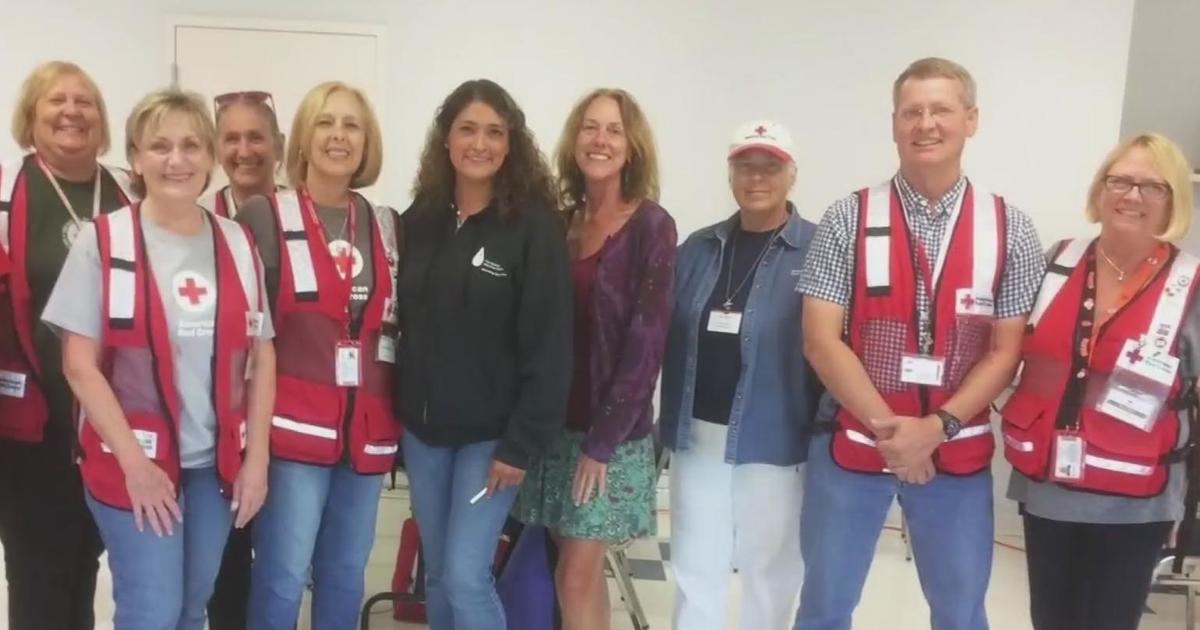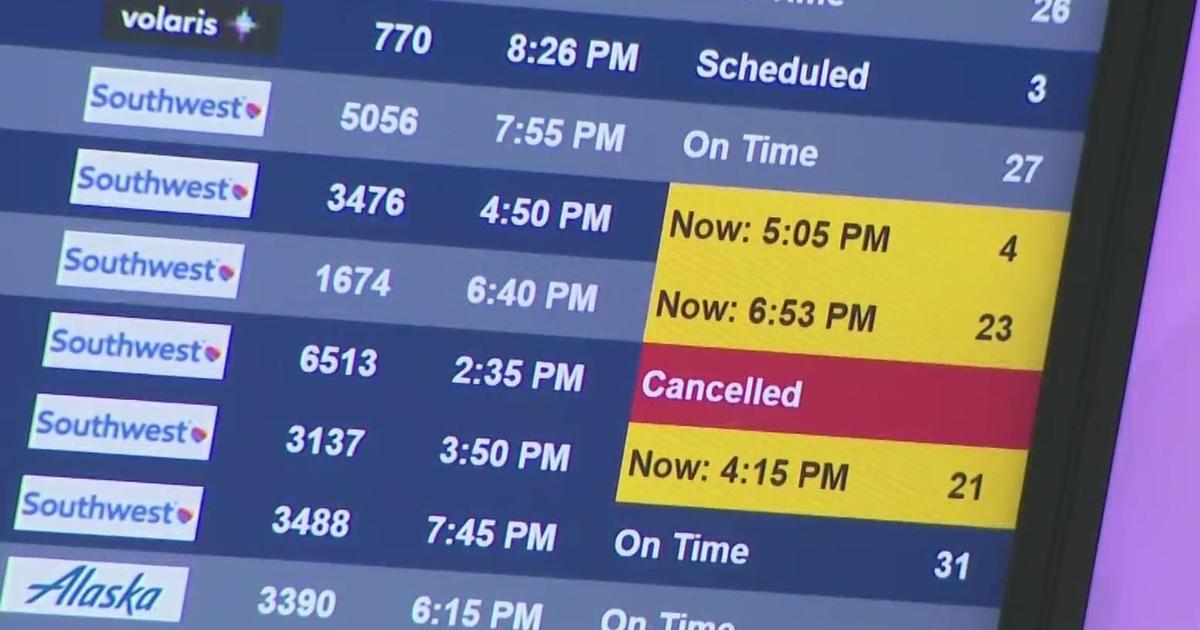'Dark COVID Winter Has Arrived;' Bay Area Health Officers Announce Regional Stay-At-Home Restrictions To Begin
(CBS SF) -- Bay Area counties are moving ahead to adopt the state's new regional stay-at-home order in light of the spike in COVID cases and surge in ICU patients, Bay Area health officials announced Friday.
The health officers from Alameda, Contra Costa, Marin, Santa Clara, San Francisco and the City of Berkeley announced their jurisdictions would enact California's regional stay-at-home order and not wait until the region falls below the 15 percent available ICU capacity that would trigger the three-week stay-at-home order.
Alameda County and the City of Berkeley would enact the order Monday at 12:01 a.m. Contra Costa, San Francisco and Santa Clara County's order would be effective at 10 p.m. Sunday, while Marin County's order would begin at noon on Tuesday. The restrictions will remain in effect through January 4.
Alameda County health officials had already hinted at possibly adopting the state's regional stay-at-home restriction early on Thursday.
San Mateo County said it would not be issuing a new stay home order and would instead remain focused on following the state's existing metrics and process, while reinforcing the public's responsibility to avoid gatherings and comply with existing safety measures to stop the spread of COVID during the holiday season.
So far, health officials with Napa, Sonoma and Solano counties have not made announcements in regards to regional stay-at-home order beyond that the state's plan is being reviewed.
In a joint statement, the health officials said in light of the rapidly escalating surge in hospitalizations statewide, it's believed more aggressive action is necessary in the Bay Area to slow the surge and prevent local hospitals from being overwhelmed.
"The number of patients sick enough to need hospitalization has tripled and is higher than even our highest numbers during our summer peak and is still climbing. Based on our early data, we believe December will be worse. The dark COVID winter that we feared has arrived in the Bay Area," said Contra Costa County Health Officer Dr. Christopher Farnitano. "I and other county health officers in the Bay Area don't think we can wait for the state's new restrictions to go into effect later this month. We must act swiftly to save as many lives as we can. This is an emergency. That is why we are making temporary changes now to slow the virus and protect our community."
The health officers made the announcement of preempting the state's stay-at-home order Friday afternoon during a joint Zoom press conference.
"We are not islands, and acting together enables us to better more completely protect the public and everyone that we collectively serve," said Santa Clara County Health Officer Dr. Sara Cody. "And similar to March, the surge in COVID-19 patients needing hospitalizations has struck Santa Clara County first, but we know our region and surrounding jurisdictions are soon to follow and indeed already experiencing the surge that we are experiencing."
San Francisco Health Officer Dr. Tomás Aragón noted that in the Bay Area, COVID-19 cases have quadrupled during the last month.
"On October 22nd, the Bay Area had an average of 475 new cases per day. Now, every day, over 1,700 new people in our region test positive for COVID-19," said Aragón. "For every positive person that is infected, we know that that person is infecting one-and-a-half other persons. For every case that we do detect, there are six to 10 cases that go undetected. The coronavirus cases are growing exponentially, transmission is widespread. This virus is relentless and unforgiving."
On Thursday, Governor Gavin Newsom announced that all sectors other than retail and essential operations would be closed in regions seeing ICU capacity drop under 15 percent. Alameda County health officials Thursday had hinted the county would implement the order before reaching that threshold in order to save lives.
"It takes several weeks for new restrictions to slow rising hospitalizations and waiting until only 15 percent of a region's ICU beds are available is just too late," said San Francisco Health Officer Dr. Tomás Aragon. "Many heavily impacted parts of our region already have less than 15 percent of ICU beds available, and the time to act is now."
The stay-at-home order would impact the following sectors with temporary closures:
- Outdoor dining (take-out, pick-up, and delivery would still be permitted)
- Indoor and outdoor playgrounds
- Indoor recreational facilities
- Hair salons and barbershops
- Personal care services
- Museums, zoos, and aquariums
- Movie theaters
- Wineries
- Bars, breweries, and distilleries
- Family entertainment centers
- Cardrooms and satellite wagering
- Limited services not included in critical infrastructure
- Amusement parks
The following sectors would need to implement additional modifications and restrictions as well as ensuring 100 percent masking and physical distancing:
- Outdoor recreational facilities: permitted only without any food, drink, or alcohol sales. Overnight stays at campgrounds prohibited.
- Retail and shopping centers: indoor operations permitted at 20% capacity with entrance metering and no eating or drinking in the stores. Special hours should be instituted for seniors and others with chronic conditions or compromised immune systems.
- Hotels and lodging: open for critical infrastructure support only.
- Offices: remote only, except for critical infrastructure sectors where remote working is not possible
- Places of worship and political expression: Outdoor services permitted
- Entertainment production including professional sports: operation permitted without live audiences.
The following sectors would remain open when a remote option is not possible with appropriate COVID-19 preventative measures including ensuring 100 percent masking and physical distancing:
- Critical infrastructure, as defined by the State
- Schools that are already open for in-person learning
- Non-urgent medical and dental care
- Childcare and pre-K
"Our biggest fear all along that we won't have a (hospital) bed for you, your mother or grandmother or grandfather when they get sick is the reality we'll be facing unless we slow the spread," San Francisco Mayor London Breed said. "If we wait one or two more weeks to have these restrictions placed on us, it will just mean our numbers will be higher and harder to bring down. Our goal is to flatten this curve now."
Breed acknowledged the hardship that the new stay-at-home order would place on the city's struggling businesses and residents.
"I don't want to do any of this. I know this means people's jobs, their businesses, their livelihoods are a stake," said Breed in a separate press briefing. "This is going to be painful, and we need to fight for any relief we can get from the federal government to get us through this."
Breed also said the city's community learning hubs supporting students struggling with distance learning would remain open and that the process of reopening schools to in-person learning would continue, despite the order.
"The schools that are open will remain open. Elementary schools that are closed can reopen with a waiver, and we absolutely must continue our work to reopen our public schools," explained Breed.
Breed made an emotional plea for San Francisco residents to bear down to get through what she said would likely be, as Newsom noted Thursday, "the last major surge we face" during the pandemic before the distribution of a COVID vaccine.
"And it will likely be the most challenging because I know people are tired of this. I'm tired of it. But we are facing the reality that we won't be able to treat patients who are sick. People will die who otherwise would live. People will lose loved ones," said Breed. "This is perhaps the final test that we face as a city in this pandemic, and we need to do everything that we can to make sure we don't face unnecessary tragedy right before this is over."
San Francisco Public Health Director Dr. Grant Colfax detailed what criteria would have to be met for the order to be lifted.
"We will be looking at a couple of key variables in regard to lifting the order. One is we will need to see a consistent decrease in the rate of COVID-19 diagnoses and hospitalizations in San Francisco for at least three weeks. And we will need to ensure that we have at least 25% capacity in our intensive care unit beds at the same time," said Colfax.



